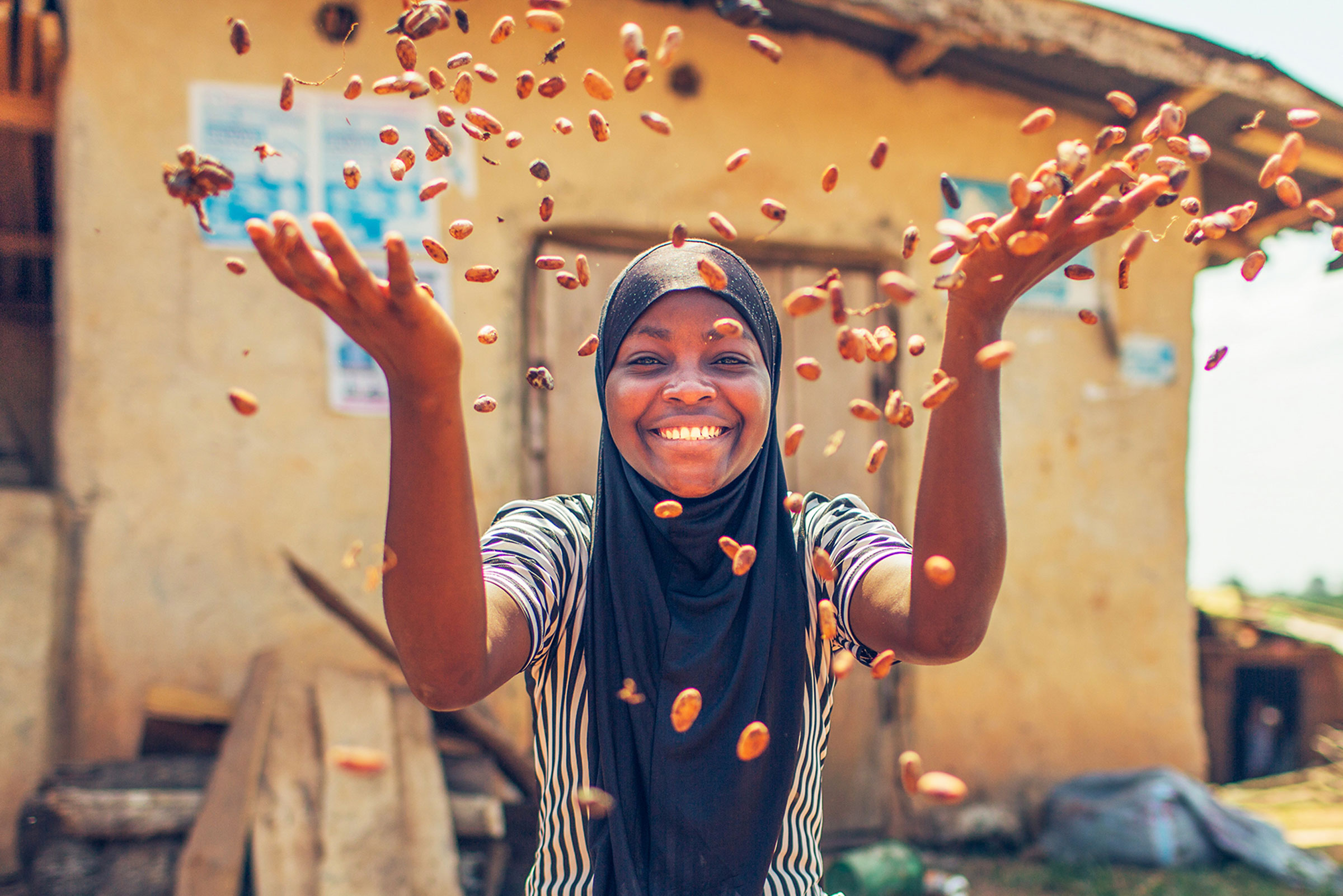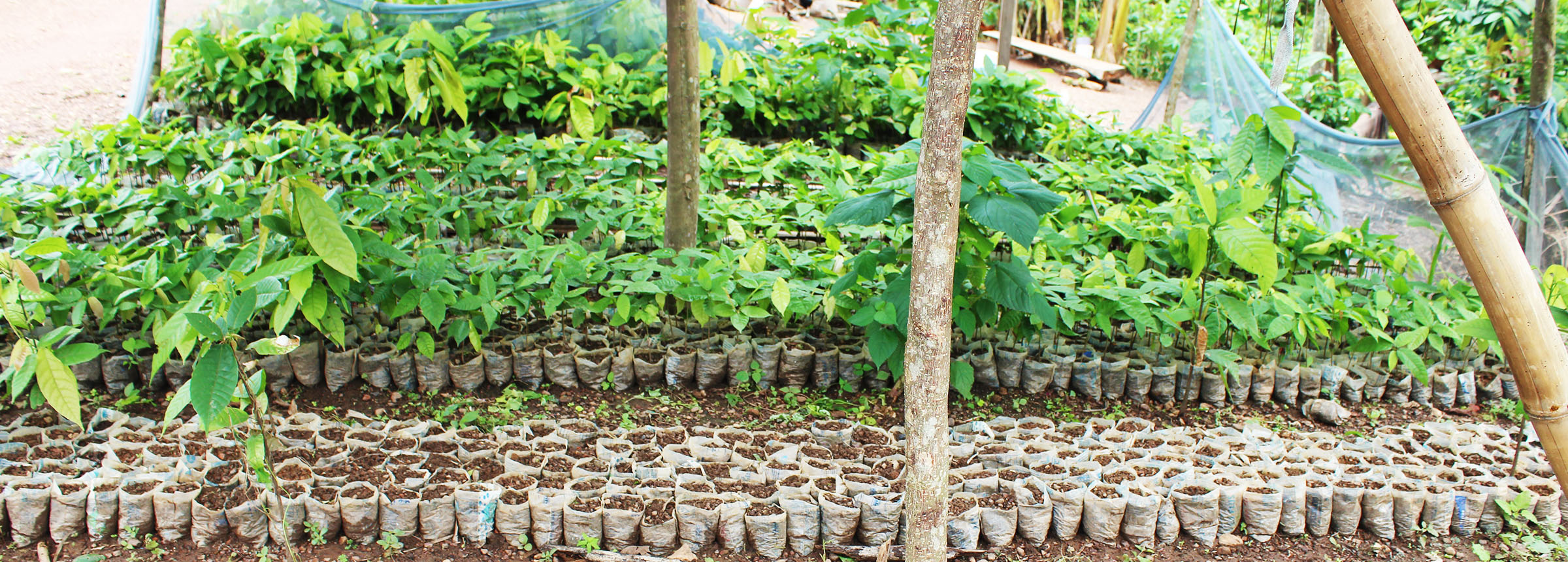
How Chocolate Can Help Save the Planet
Your Valentine’s treat can be relatively climate-friendly—as long as it’s shade-grown
By Timothy Pearson
You can count on the fact that chocolate will, as always, be a mainstay of Valentine’s Day. You can also count on the fact that cocoa bean cultivation is bad for the environment—especially for the rain forests of West Africa. That, along with concerns over child labor on cacao plantations is enough to make the conscientious consumer think about giving up chocolate for good.
But what if we could indulge in chocolate without guilt? Or at least, without climate guilt? In fact, we can, because when cocoa is grown sustainably, it can actually help save the world, not destroy it.
Cocoa beans grow in pods on shrubby evergreens that are often planted in the open but can also thrive under canopies of large rainforest trees. A well-managed grove of shade-grown cacao trees can store a significantly higher amount of carbon than maize or other annual crops—up to 150 metric tons per hectare compared with 10 or less for maize—and up to three times the amount stored by cocoa grown in full sun.
Shade-grown cacao trees are also more drought-tolerant and weed-resistant than those grown in the open. They are more friendly to wildlife, creating corridors between forests and enhancing biodiversity. And they provide a way for some of the world’s poorest populations to make a living, sustainably.
The problem is not that cacao trees can’t help the environment. The problem is that too few of them do. The reasons for this are complex, but mainly boil down to lack of resources, lack of information and insecure land tenure.
Many West African cacao farmers are sharecroppers. They can’t remove old, diseased trees because this would jeopardize the tenuous hold they have on the land. They can’t afford to plant new trees, either. As a result new cacao farms are usually created by entrepreneurs who cut down trees and create chemical-intensive monoculture plantations, which both pollute and reduce biodiversity.
As the planet grows warmer and dryer, though, these high-yielding, full-sun cacao varieties are withering in the heat and succumbing to diseases and pests. Many of the small cocoa farms in West Africa’s Cocoa belt, which extends from Ivory Coast to Cameroon and supplies up to 70 percent of the world’s cocoa, now suffer from low productivity.
But there is hope. When cost and land tenure issues are surmounted, farmers are more than willing to grow resilient cacao in the shade. For instance, when farmers receive help in obtaining the right to farm the land they work, they have the security to improve their groves. That, along with access to finance, means they can replace older trees with more resilient hybrids. Lasting success flows from strategies that protect trees and improve livelihoods.
The cacao tree isn’t the only thing that thrives in forests. People do, too. Many of the poorest and most marginalized people in the world—a fifth of the global population—live in forests or on the edges of them. These people need trees for food or fuel or housing. They earn their living from them.
We can’t put a fence around forests to keep poor people from exploiting them. Doing so may reduce greenhouse gas emissions, but it’s not realistic. We need to fashion a future where forests can be used to benefit those who count on trees for their living without inflicting damage on the rest of the planet. And in the cacao groves of West Africa where these conditions are being met, plants and people are thriving.
Trees are crucial weapons in the fight against climate change, but they’re also vital to the livelihoods of 1.5 billion people, including those of cocoa farmers. So enjoy your chocolate—provided that it’s a sustainable, shade-grown brand. In fact, buy, eat and give as much of it as you like. Your sweetheart will thank you. The world will, too.
ABOUT THE AUTHOR
Timothy Pearson
Timothy Pearson is a carbon specialist who directs the Ecosystem Services Unit at the nonprofit Winrock International and a lead author and technical expert for the new global emissions reduction verification system Architecture for REDD+ Transactions (ART).
This article was originally published in Scientific American on
Related Projects

